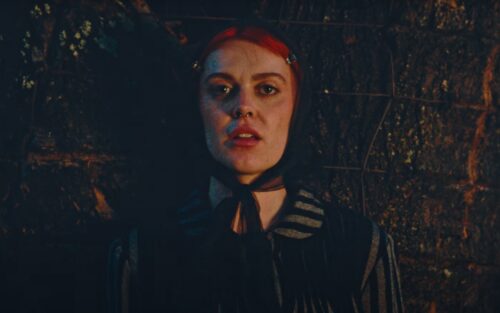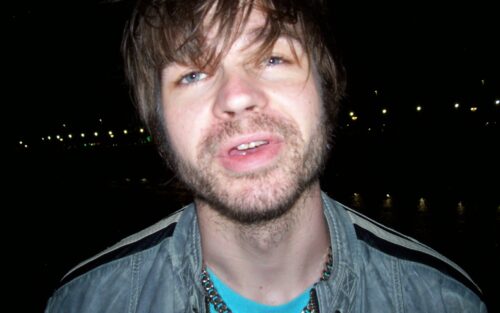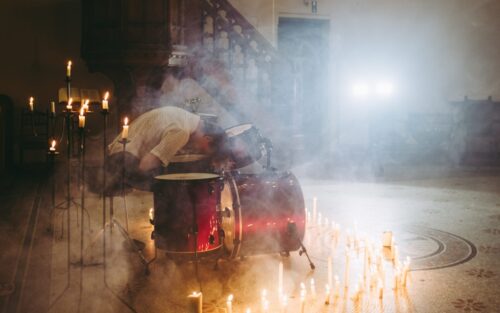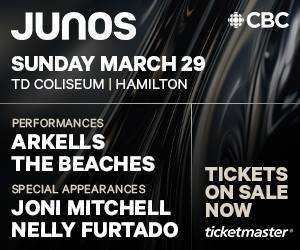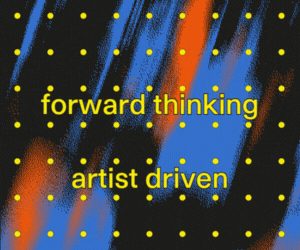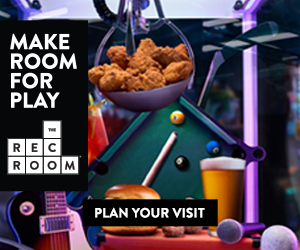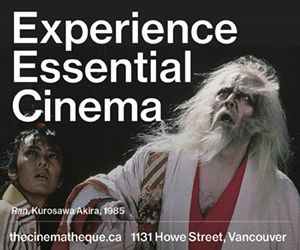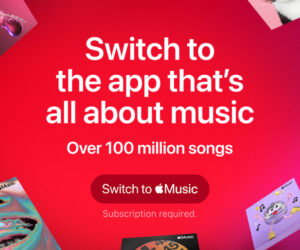Kandle Lights Up a Lockdown Dream With New Album, Set the Fire
The rising songwriter on early emo aspirations, learning to play guitar at lunchtime, and navigating the industry with 54-40’s advice.
By Luis Minvielle
- Published on
Set the Fire is Kandle’s third solo studio album, but her musical career traces back to the late aughts when she put out fuzzy alternative rock cuts with her band The Blue Violets. Since then, Kandle has gravitated towards more croon-driven, twangy goth-pop tunes that diverge from Blue Violets’ 90s-tinged sunbaked sound. Still, her guitar-based rock songs are just one side of the coin; from early on in her career, Kandle’s work as a songwriter has been aided by her notable visual style — a film noir palette that casts a romantic terror akin to classic vampire flicks. These visual narratives scored her a JUNO Award nomination for her music video, “Not Up to Me,” in 2015. “Every time I write a song, I have the music video already planned in my head, and every song to me is a story,” says Kandle. “Creating visuals for music is probably my favourite and most satisfying thing to do.”
Kandle’s musical walkway — from her alt-rock beginnings to her twangy, country-infused indie-pop — can be traced to her earliest influence: her father Neil Osborne of British Columbia’s rock act 54-40. Predictably, when speaking of her first encounters with music, Kandle says that she’s loved rock and roll since she was “one year old.” It’s only apt that the 54-40’s first album, Set the Fire (1984), serves as the namesake for Kandle’s latest record.
We talked with Kandle about her early beginnings, her visual chops, being locked up in a studio, and her father’s explicit suggestions regarding music.
Where are you right now?
I’m in Vancouver, although by accident because I got trapped here when the pandemic hit and I couldn’t leave. I almost like it. But moving to a new city in a pandemic isn’t very exciting because you don’t get to check out what it offers.
How did you first get into writing and performing music?
I first started writing teenage angst poetry. I was pretty young and emo, doing “my life sucks” kind of poems that every 13-year-old would write. From there, I started learning guitar. I would ask boys at school to teach me different rock riffs at lunchtime and I just kind of started incorporating the two. But I never really took it that seriously. It was more just an outlet for me and something I enjoyed doing. But it took a lot more years after that before I considered it as a career. My goal has always been to create, and that’s the part that I live for.
You named your new record after 54-40’s debut album of the same name. Aside from 54-40, what kind of music did you grow up listening to in your house?
A lot of 90s alternative, like the Cranberries and Our Lady Peace. I grew up with Neil Young and the Rolling Stones and the Beatles. I’ve just always loved rock and roll since I was one year old. It made me feel alive. And for me, just any music that makes me feel something inspires me and excites me.
What is the best piece of advice that your dad, Neil Osborne from 54-40, ever gave you?
“Don’t do it! It’s a tough industry. Are you sure you want this? You could go to school. get a real job.”
You’ve been releasing records for more than a decade now. Tell us what went different with this record, pandemic, quarantine, and all.
This is the first time I’ve been a fully independent artist. I was very bitter and tired from all my experiences and finally broke out of my contracts. I realized I had all these songs. I applied for some grants and got them. That’s when I took his engineer from London, who’s also a producer.
I went straight into the studio in Vancouver on the first day the lockdown took effect. So we were quarantined in the recording studio right off the top. But I think it was pretty lucky. I love being in the studio more than anything, and I could just completely get lost in the music and the creative process, and there was no outside world to worry about.


What is something that you would credit to keeping you sane and positive throughout the last year?
I’ve had some moments of not being sane at all, I must say. But I think the best thing is finding any way to be in nature. Going for a walk, looking at the trees, just any reason to get outside can always ground you and help so much.
Set the Fire seems to embrace alternative rock’s sharply edged guitars with forefronting crooning vocals. How did the team behind the album influence this stylistic merging?
I’m very influenced by both alternative rock and crooning jazz vocalists. I listened to a lot of Sinatra and Billie Holiday. I taught myself to sing by singing along to those old records. And I surrounded myself in the studio with people that have the same influences. This shaped the record in exciting ways because we did things very backwards based on restrictions and the lockdown, so we got all the drums and bass done on the first day. On the second day, we did all the backing vocals because I wanted my three girlfriends, the Wiccs, to sing. That’s a very backwards approach to making a record, but it created an opportunity for us to pause and reflect and go, “oh, we don’t need to fill so much space with this guitar line.” So we tried to keep it sparse.
You’ve gathered nominations for your videos, which, so far, have been secretly dark. Do you consider Kandle a visual project, as well as a music project?
The visual arts have always been so important to me. I went to art school as a photographer, but then I got my first record deal, and everything shifted. Every time I write a song, I have drawings that go with it, or I have the music video already planned in my head. And every song to me is a story. I can see the colours of it and the shapes and how it played out. So creating visuals for music is probably my favourite and most satisfying thing to do. It’s like bringing it to life.
What are your goals for this spring/summer, and what are your plans once the pandemic ends?
I’m kind of excited about not knowing. I’m always going to write new songs and record new songs and work on the next record because I’m obsessive like that. And I can’t help myself.
Is there anything else you want us to know about you that we can share with the world?
I think that the most exciting part about music is connecting with people and having someone pick a song or pick a lyric that is the soundtrack to their life and what they’re going through. I hope that everyone has a chance to listen to it and find a lyric that they can relate to.
By Stephan Boissonneault
Nate Amos revisits a decade of stray ideas and turns them into his most compelling record yet.
By Khagan Aslanov
Mike Wallace’s electro-punk project premieres the hypnotic, percussion-driven video for "Certain Days."

